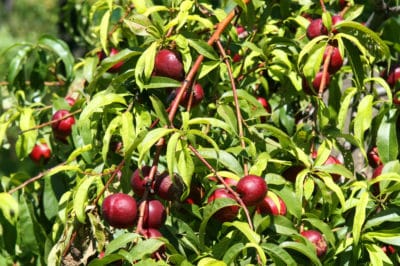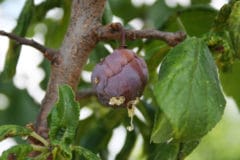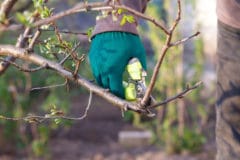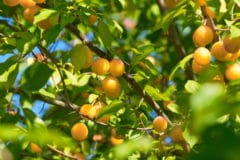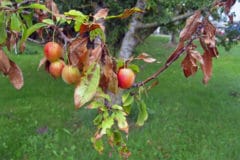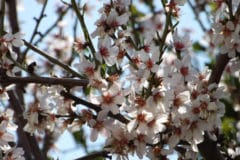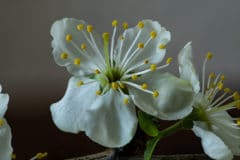What is the best location for planting a plum tree?
Plum trees grow best in full-sun. While they can also tolerate some shade, fruit may be smaller and foliage may not be red on purple leaf hedge varieties when grown in too much shade.
What is the best type of soil and pH for plum trees?
Plum trees grow most vigorously in deep, fertile soil. Good water drainage in the soil is also important for growing plum trees. Plum trees prefer a slightly acidic soil with a pH of 5.5 to 6.5.
Can you plant a single plum tree and get fruit?
Not with many varieties. Many types of plum are self-unfruitful, needing a pollinator tree of a different variety belonging to the same group. However, there are some self-fruitful plums, including:
- Santa Rosa
- Methley
- Italian plum
What kind of care do plum trees need?
In order to thrive and produce the best crops of fruit, plum trees need:
- Watering about twice a week during warm weather,
- An annual application of fertilizer,
- Yearly pruning,
- Control of weeds, diseases, and pests as needed.
How far apart should trees be spaced?
When grown as a hedge, purple leaf hedge plum varieties can be planted as close as 2 feet (.6 meters) apart. Dwarf varieties should be spaced approximately 10 feet (3 meters) apart, and full-sized trees should be spaced 15 to 20 feet (4.6 to 6 meters) apart.
How long does it take for a plum tree to bear fruit?
Trees bear fruit in four to six years after they are planted. Nursery trees are often already two to three years old when you buy them, reducing the length of time you have to wait for fruit.
How long do plum trees live?
Plum trees can survive and bear fruit for as long as 30 years. However, the purple leaf varieties are shorter lived and often only make it to an age of about 15 years.
How much water do plum trees need?
Give newly planted and small trees about 1 gallon (3.8 liters) of water twice a week when there is no rain. Mature trees need approximately 8 to 10 gallons (30 to 38 liters) of water applied twice per week.
Watering less frequently, but deeply, helps prevent soggy soil conditions which can foster diseases in the roots. Always water immediately after applying fertilizers.
